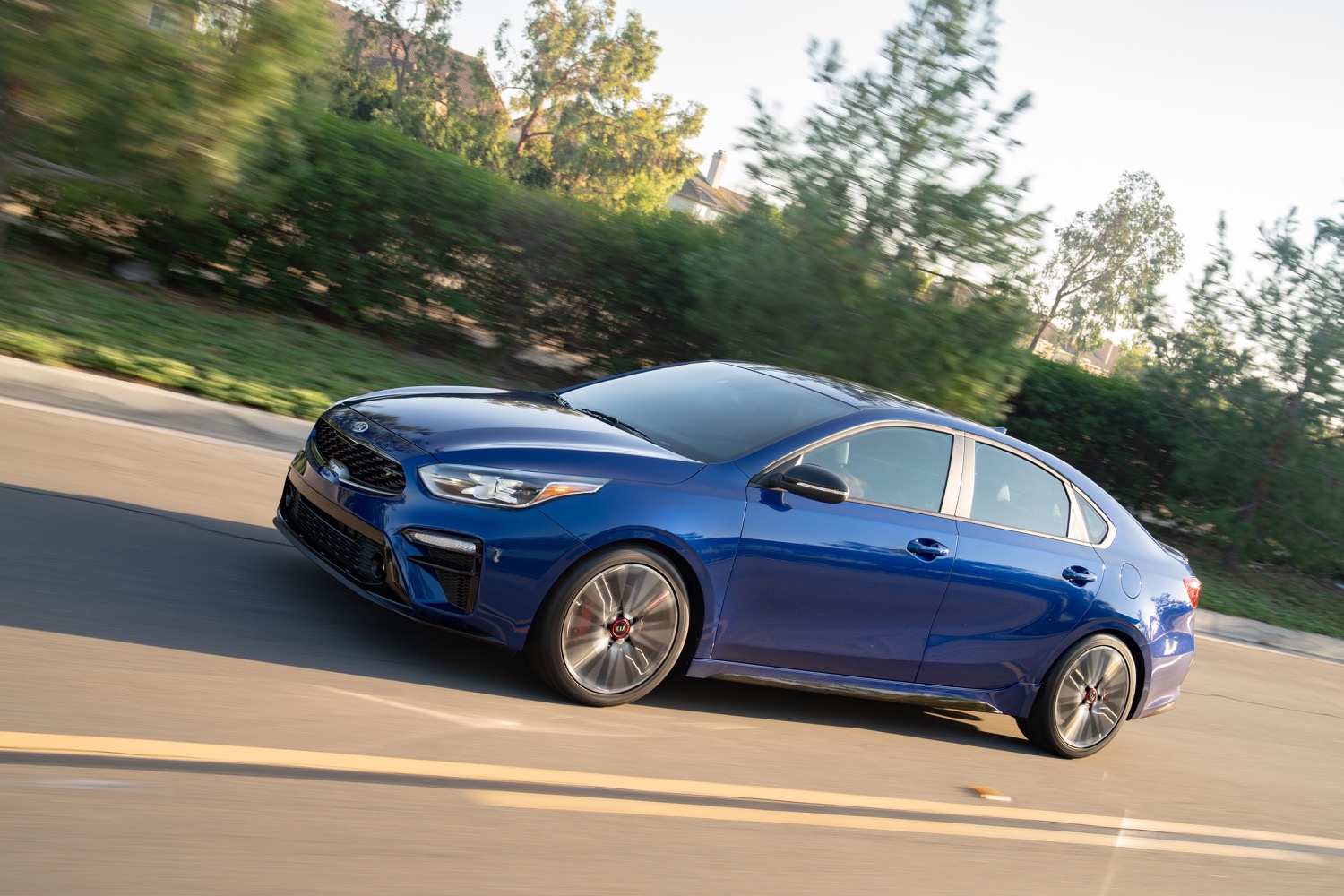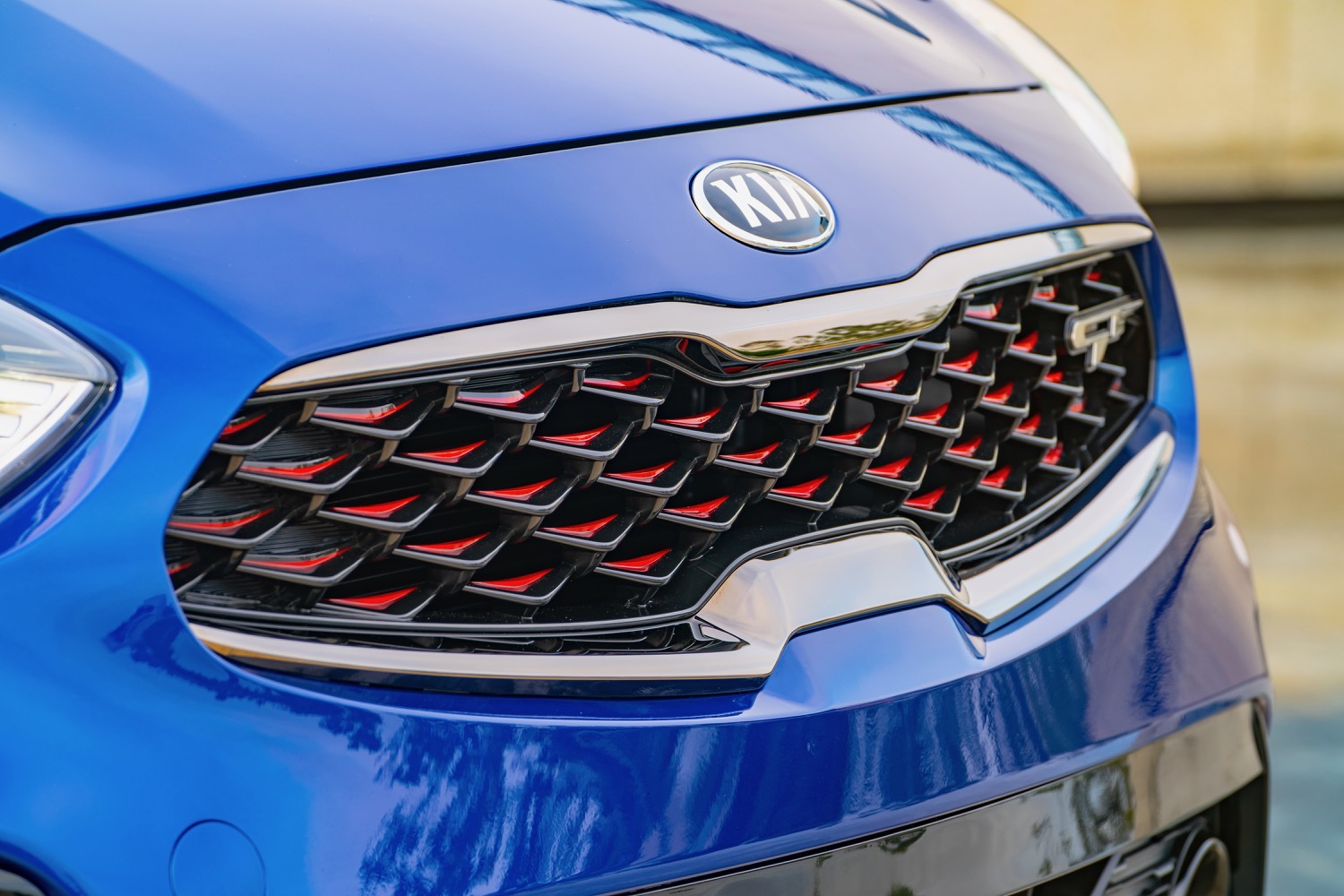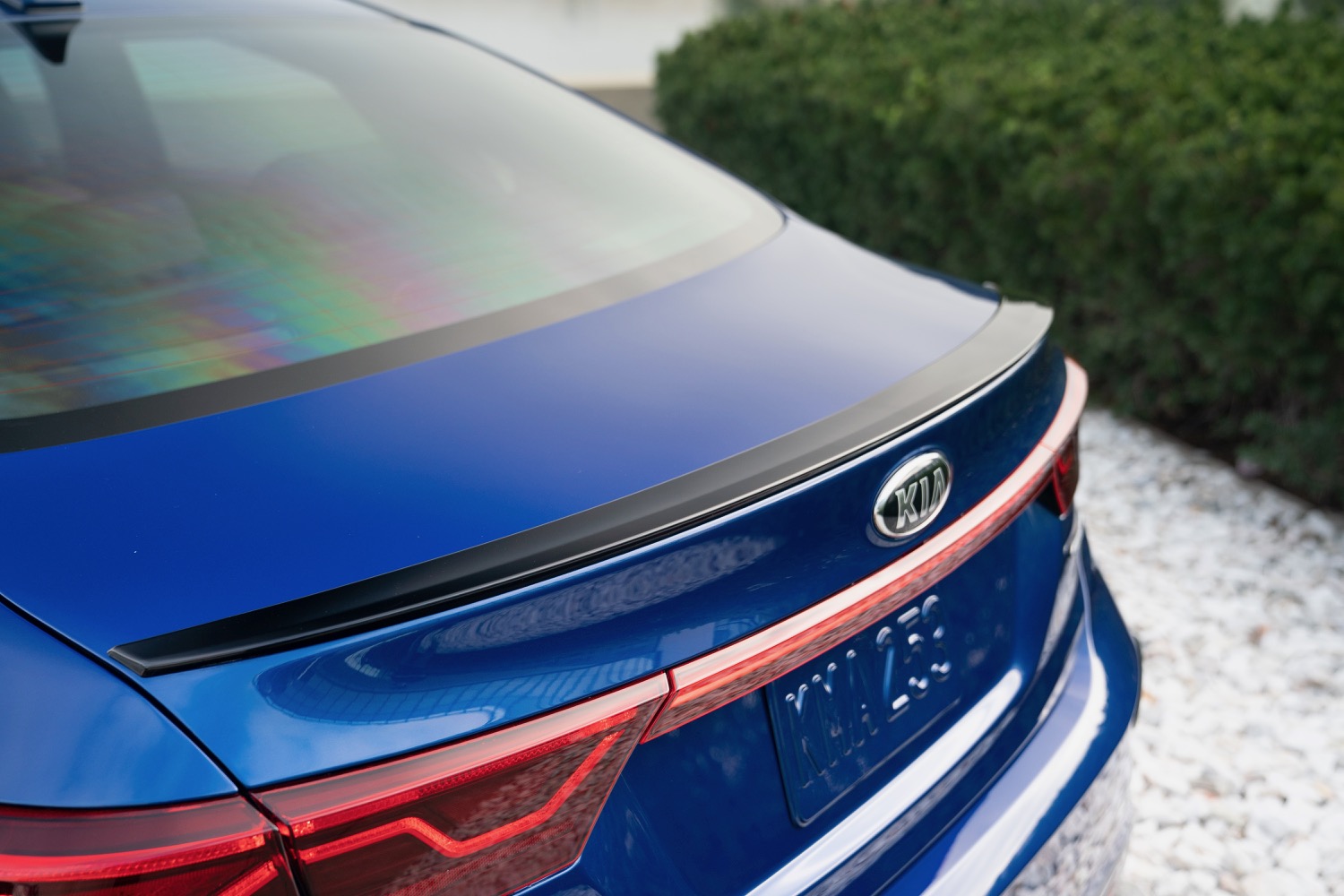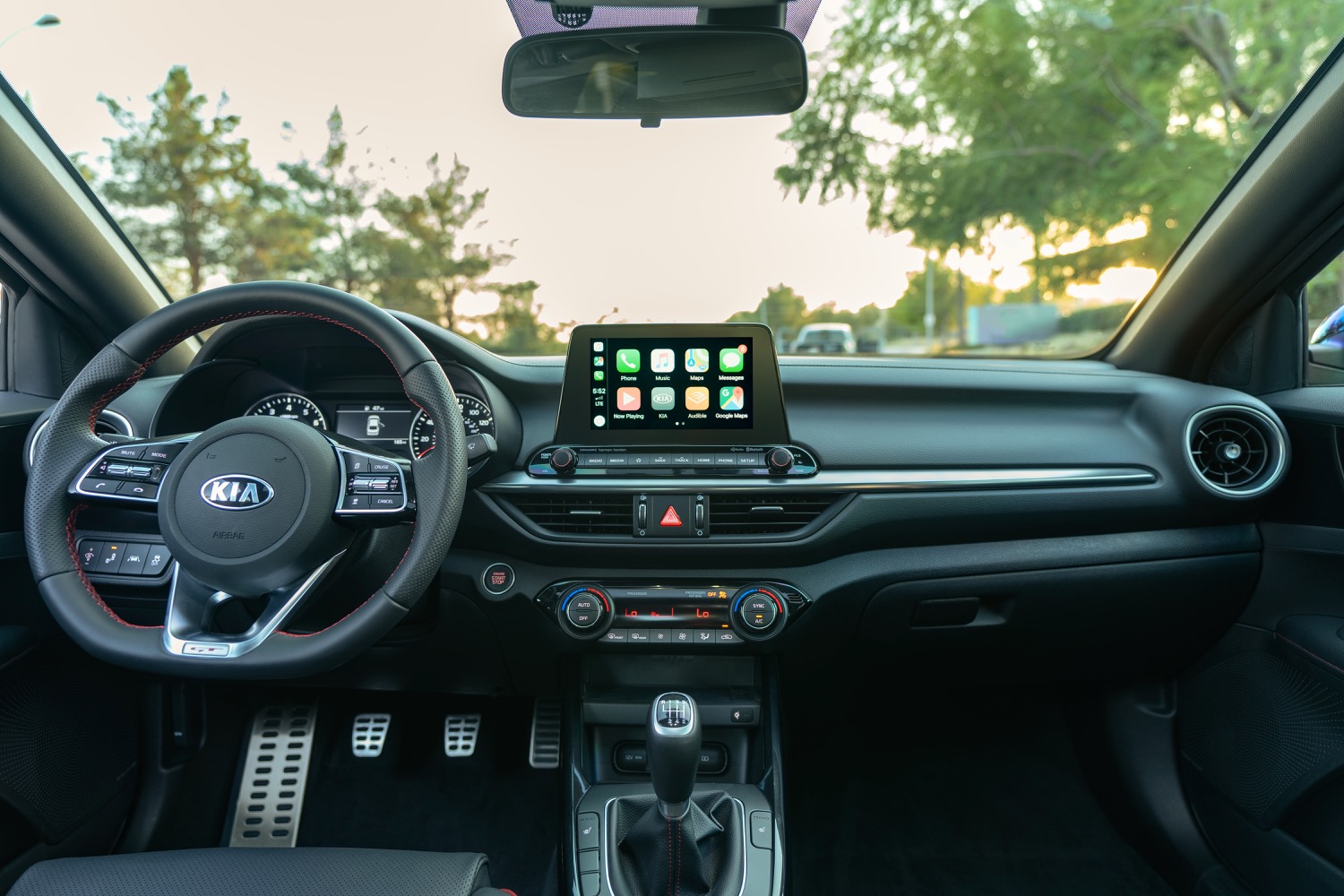The recently redesigned Kia Forte is a sensible compact car, but Kia wants to give it a dose of sportiness. The 2020 Kia Forte GT debuts at SEMA 2018, the massive automotive aftermarket trade show held every year in Las Vegas. Will this new model become the next darling of the tuner scene, or a forgettable attempt at excitement?
Kia views the Forte GT, which goes on sale next summer, as a little sibling to the Stinger GT. That’s a bit of a stretch, given that the Forte won’t have the Stinger’s 365-horsepower twin-turbocharged V6 engine or rear-wheel drive. At least the front-wheel drive Forte GT will have a healthy 201 hp, which is a significant increase over the base Forte’s 147 hp. Kia didn’t say so specifically, but the Forte GT may use the 1.6-liter turbocharged four-cylinder engine from the related Hyundai Elantra Sport, which is also rated at 201 hp.
The engine isn’t the only thing getting upgraded. Kia promises a sport-tuned exhaust system and independent front and rear suspension — a rarity in economy cars that should yield better handling. The Forte GT will also be available with a six-speed manual transmission (or a seven-speed dual-clutch automatic).
The Forte GT also gets some boy-racer styling additions. On the outside, the GT will be set apart from other Forte models by a special grille, rear spoiler, and LED headlights, as well as optional 18-inch wheels. The interior gets alloy sport pedals and a leather-wrapped flat-bottom steering wheel (with paddle shifters in automatic-transmission cars). Optional extras include “Sofino” sport seats and LED interior ambient lighting, which should give this Kia a real Fast and Furious vibe.


The trio of Fortes will be part of an armada of Kias at SEMA this year. The Korean automaker is also bringing show cars based on the Stinger, K900 sedan, and the Telluride SUV, which hasn’t even gone on sale yet. They’ll join legions of other insane cars on the Vegas show floor.
Updated on October 30, 2018: Added more photos.












